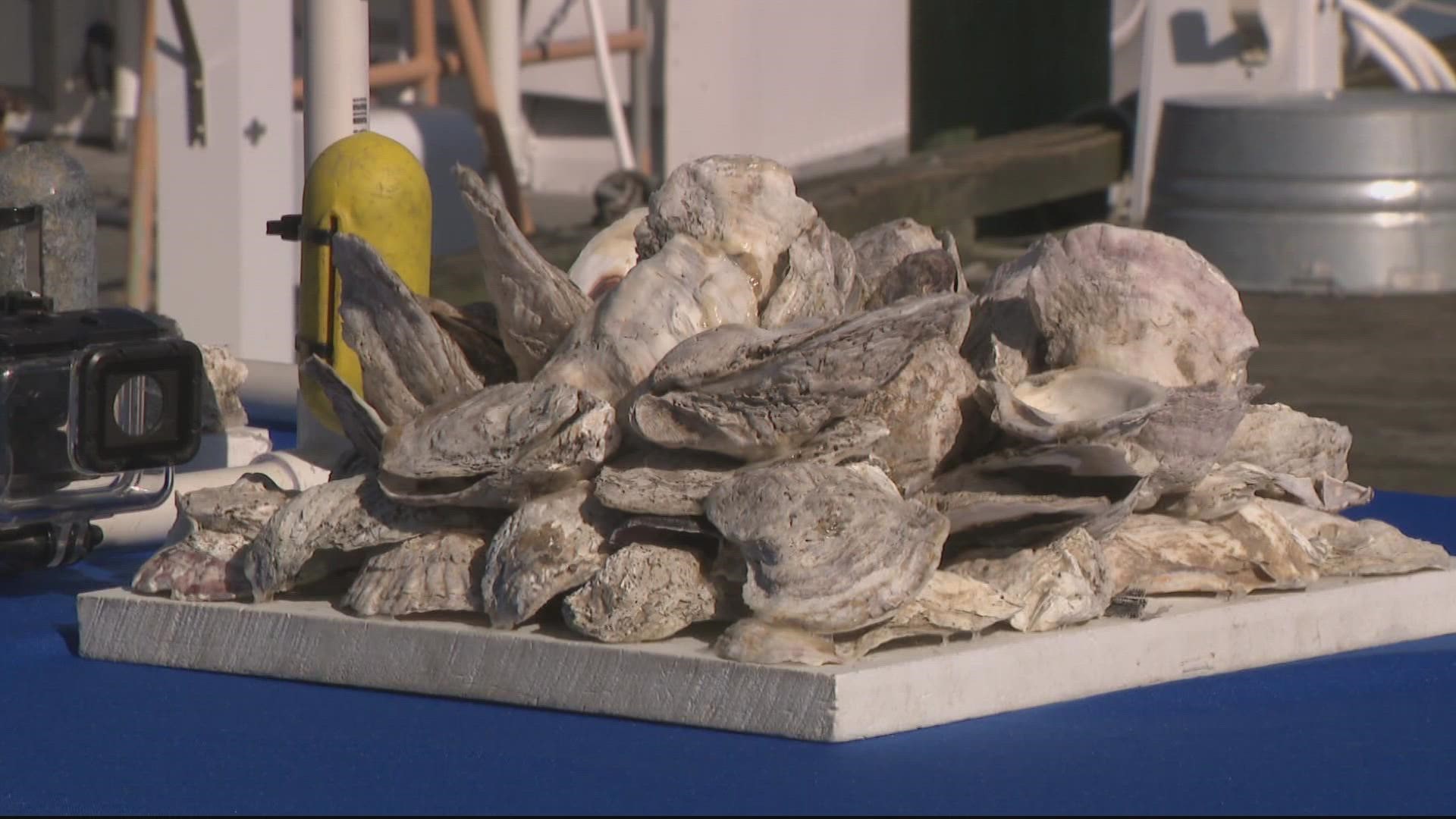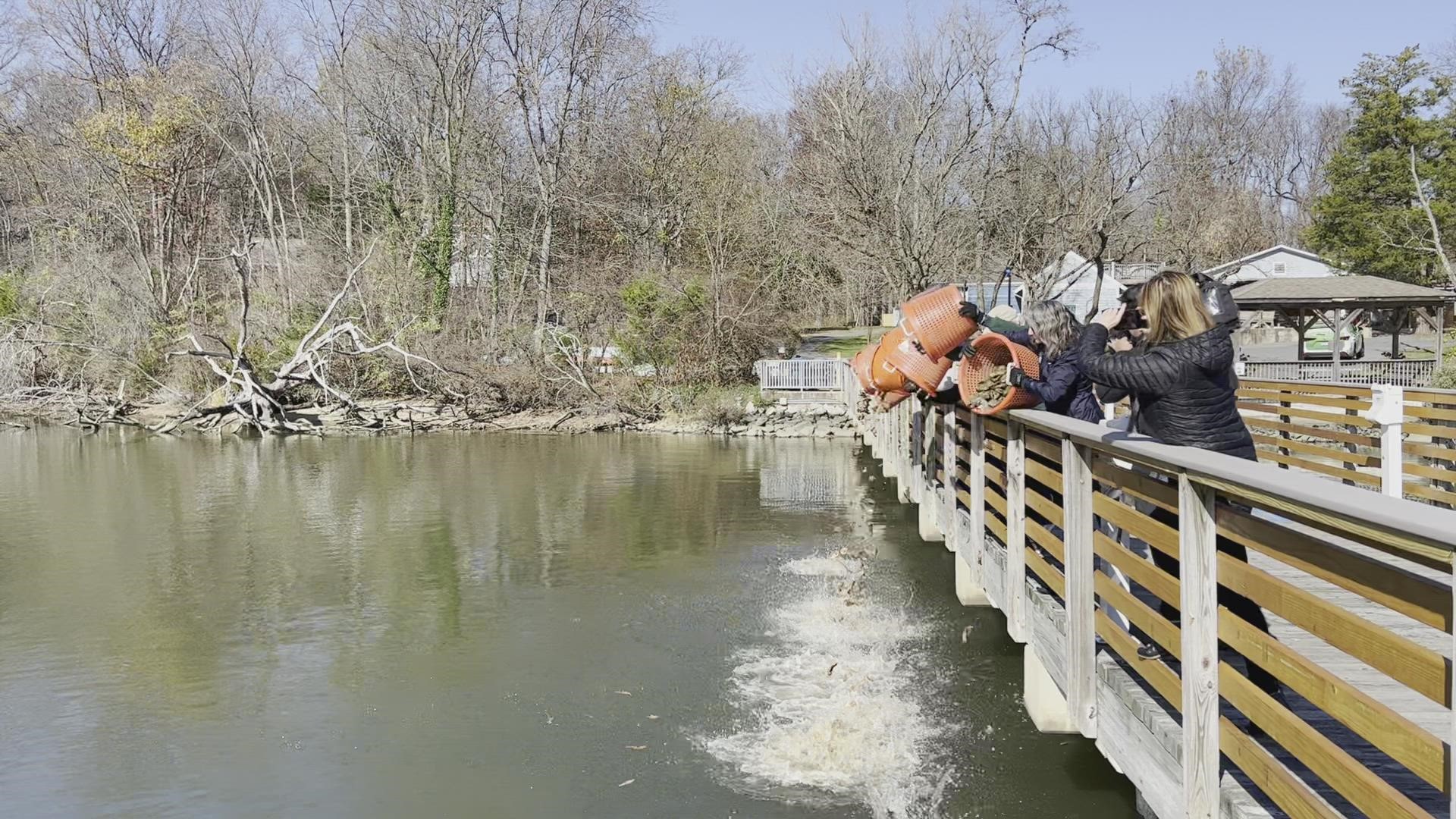WASHINGTON — A new partnership between the Chesapeake Bay Foundation and the Smithsonian Environmental Research Center (SERC) was just announced to restore oysters in the bay.
The occasion was marked by adding 200,000 oysters to a reef off the dock at the SERC.
"Bringing world-class restoration and world-class science together is just a match made in heaven," explains Hilary Falk, President and CEO of the Chesapeake Bay Foundation.
Together, the Chesapeake Bay Foundation and SERC will not only help grow oyster populations, but they will also help scientists from both organizations work together to learn where oysters are thriving and how to more effectively restore oysters where the Bay is lacking stronger habitat.
"We hope that this partnership will bring a new level of scientific rigor and information that we can use to continue to improve our program year over year," Allison Colden, a Maryland Senior Fisheries Scientist with the Chesapeake Bay Foundation added.
SERC is already utilizing technology you might even have in your own home to make tracking oyster reefs more efficient and cost-effective.
"This frame here has a couple of GoPro cameras attached to it that we're using to take video and pictures of oyster reefs," demonstrates Matt Ogburn, a Marine Ecologist with SERC.
It's important to track the progress of oysters given the current state of their population.
"We only have about 1% of the oysters that used to be in the Bay historically," explains Ogburn.
And that falls on the actions of humans.
"We pulled lots of oysters out and then used their shell to do things like pave roads and build buildings and things," adds Ogburn. "That shell wasn't going back into the Bay."
An important process when it comes to the development of oysters. Baby oysters, also called spat, don't have shells and rely on that hard surface to grow.
"Oysters are one of the most important species in the Chesapeake Bay," says Falk. "And one that is vital to the success of the clean-up effort."
Not only do they filter water very efficiently, they also provide habitats for other species like blue crabs and rockfish.
Over the past 20 years, the Chesapeake Bay Foundation has planted more than 330 million oysters in the Chesapeake Bay and as part of a larger coalition called the Chesapeake Oyster Alliance the hope is to get to 10 billion oysters planted in the Bay by 2025.


